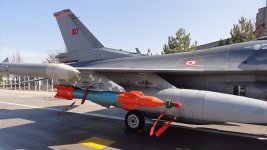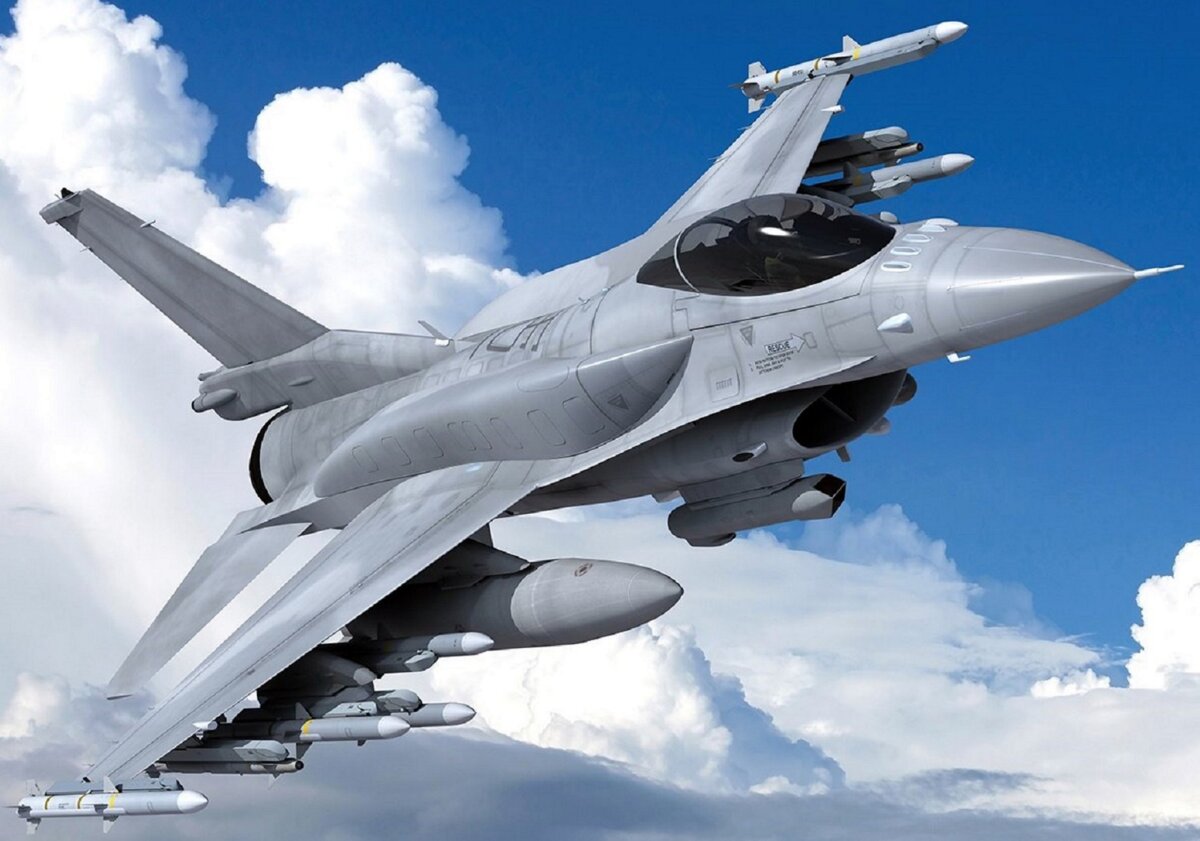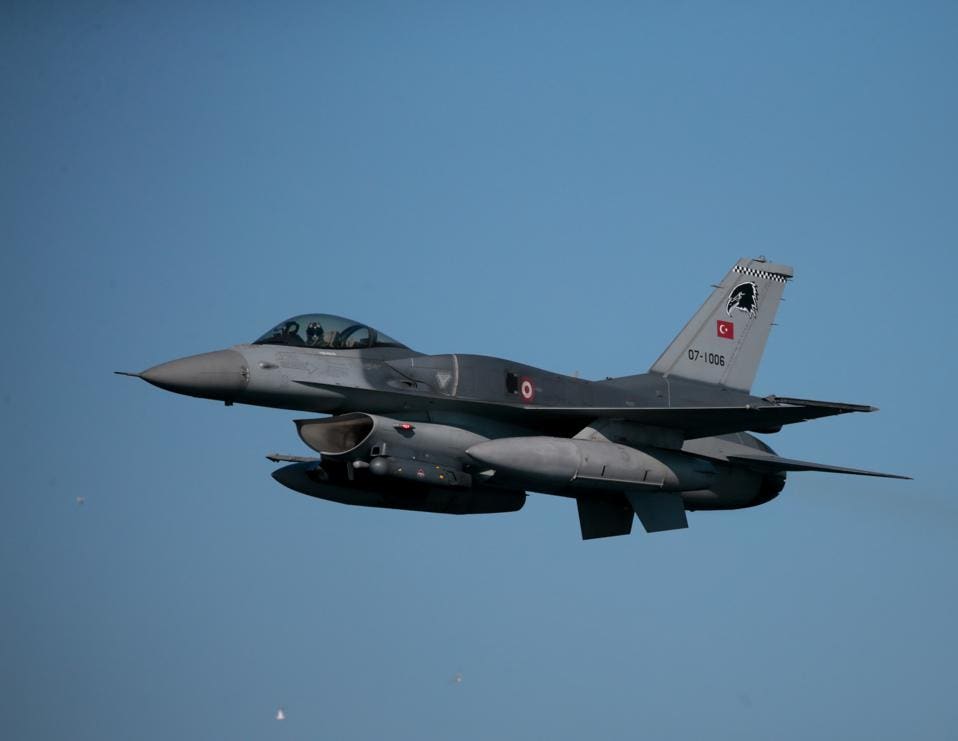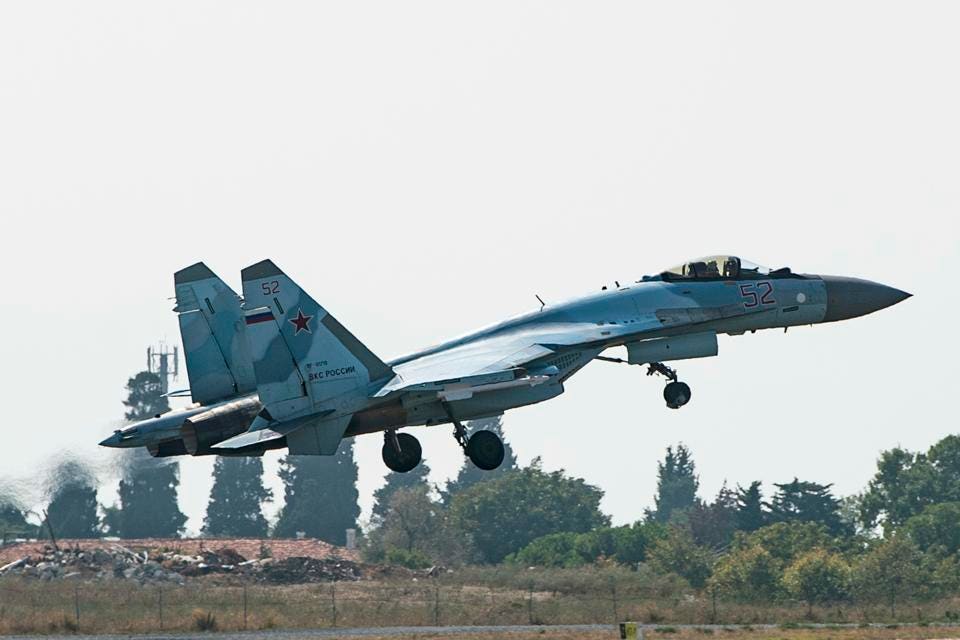Paul Iddon
Contributor Aerospace & Defense
Turkey Needs To Follow UAE’s Lead And Acquire A 4.5-Generation Stopgap Fighter
The United Arab Emirates' landmark deal to procure 80 cutting-edge Dassault Rafale multirole fighter jets from France gives the Emirati Air Force a highly formidable interim solution until it finally takes delivery of the F-35 Lightning II or another fifth-generation fighter.
Turkey, on the other hand, still needs a similar stopgap solution and may find itself in a bind if the U.S. refuses to sell the advanced F-16s and modernization kits Ankara recently requested.
Dassault Aviation was ecstatic in early December after it reached a deal to sell 80 Rafale jets and 12 transport helicopters to the UAE for $19 billion.
Dassault said the deal was "the largest ever obtained by the French combat aeronautics industry," and its CEO Éric Trappier even
called it the "most important contract ever obtained by the French military aeronautics industry."
DUBAI, UNITED ARAB EMIRATES - 2019/11/19: A French Air Force Dassault Rafale C jet fighter performs ... [+]
For the UAE, the deal is also very significant. It's the most sophisticated fighter Abu Dhabi has ordered in 20 years, the last being the procurement of its advanced fleet of F-16s at the turn of the century.
In the late 1990s, the UAE ordered almost 80 Block 60 F-16s for $8 billion. That deal was hugely significant at the time since it "marked the first time the United States had sold a better aircraft overseas than its own forces fly."
The Rafales the UAE has purchased will similarly give its air force a highly advanced and formidable fighter that will likely enable its air force to deal with threats on and over the modern battlefield for years to come.
France is selling the UAE the latest version of the Rafale, the F4. The French Air Force is depending on such highly-advanced Rafales to serve as an interim solution until it can field a six-generation European-developed stealth fighter in the next 15-20 years (neither France nor Germany are buying F-35s).
"As France must wait nearly two decades before a European stealth fighter can enter service, its armed forces are betting that in the interim adding networked sensors and weapons to the Rafale's superior kinematic performance and powerful electronic warfare systems will keep the agile jet relevant in an era of proliferating stealth aircraft and long-range surface-to-air missiles,"
wrote military aviation analyst Sebastien Roblin.
A French air force (Armee de l'air) Dassault Rafale multirole fighter aircraft performs aerial ... [+]
Roblin also noted that the Rafale F4 "introduces additional network-centric warfare capabilities and data-logistics similar to those on the F-35 Lightning, enabling Rafales on patrol to build a more accurate picture of the battlespace by pooling their sensors over a secure network, and even exchange data using new satellite communications antenna."
In late 2020, the UAE ordered 50 F-35s and 18 MQ-8 Reaper drones for $23 billion. Abu Dhabi insisted the Rafale deal was not a replacement or substitute for the F-35. Nevertheless, shortly after that French deal was signed, the UAE said it was suspending discussions on acquiring F-35s.
"Technical requirements, sovereign operational restrictions, and cost/benefit analysis led to the reassessment," a UAE official
told Reuters. Discussions, the official added, "may be re-opened in the future."
This could well be a negotiating tactic on Abu Dhabi's part to get Washington to ease some of the conditions and restrictions around procuring the fifth-generation aircraft.
Sheikh Hamdan bin Mohammed bin Rashid Al-Maktoum, Crown Prince of Dubai, inspects the open cockpit ... [+]
Either way, the UAE is not likely to get F-35s until the second half of the 2020s at the very earliest. If it does ultimately decide to pull out of the deal altogether, it won't likely acquire any fifth-generation fighter until sometime in the 2030s.
Between now and then, it will field one of the most cutting-edge 4.5-generation fighters on the market that will likely give its air force a technological edge over numerous threats it may face in the foreseeable future.
Turkey was a member of the F-35 Joint Strike Fighter program from its beginning two decades ago. In addition to buying up to 100 of the stealth fighters for its air force, Ankara would also have a lucrative role manufacturing hundreds of parts for the advanced fighter's supply chain.
However, the United States removed Turkey from the JSF program and banned it from buying any of the jets after Ankara bought advanced S-400 air defense missiles from Russia. Turkey's ambitious fifth-generation TAI TF-X stealth fighter project will not likely be complete until the 2030s at the very earliest.
Now that it has lost an opportunity to procure fifth-generation fighters for at least a decade, Turkey now needs a 4.5-generation stopgap solution. Here too, Ankara may have a problem. The backbone of Turkey's fighter fleet is made-up of 270 F-16s, mostly
Block 30/40/50s. Without substantive upgrades or even replacements, these aircraft will start becoming obsolescent by the end of this decade.
IZMIR, TURKEY - MARCH 05: F-16 fighter jet takes part in 'Blue Homeland 2019' naval drill in Izmir, ... [+]
It's, therefore, not at all surprising that Ankara is presently seeking 80 advanced Block 70 F-16s from the United States along with 80 modernization kits to upgrade existing aircraft in a $6 billion deal.
Block 70 F-16s would be the ideal stopgap option for Ankara since it has operated F-16s since 1987, with the third-largest fleet of the fighter-bombers on the planet. Furthermore, the Block 70 F-16 includes fifth-generation technologies developed for the F-35.
According to the manufacturer Lockheed Martin,
the Block 70 "combines capability upgrades, most notably the advanced Active Electronically Scanned Array (AESA) radars with a new avionics architecture, and structural upgrades to extend the structural life of the aircraft by more than 50 percent beyond that of previous production F-16 aircraft."
"Operational capabilities are enhanced through an advanced datalink, targeting pod and weapons; precision GPS navigation, and life-saving Automatic Ground Collision Avoidance System (Auto GCAS)."
Turkey may not get these aircraft anytime soon if Congress opposes the deal,
which is a very strong possibility.
Turkey has repeatedly suggested that it will turn to Russia for comparative aircraft if Washington refuses to sell modernized F-16s. Here too, its options are limited.
Ankara could opt for a number of 4.5-generation Su-35 Flanker-Es from Moscow. But that would mean incurring additional sanctions from the United States under the Countering America's Adversaries Through Sanctions Act (CAATSA).
A Russian Sukhoi Su-35 fighter takes off during an air show at the Teknofest festival at Ataturk ... [+]
The Turkish Defense Ministry and state procurement agency reportedly drafted technical reports on the Russian jets.
"Both reports found the Russian warplanes technically insufficient and extremely costly due to Ankara's need for the adaption to the Russian systems," Breaking Defense
reported in October.
Consequently, Turkey could find itself in an awkward position if Washington decides to call its bluff on buying Russian fighters. It could also find its air force facing a precarious situation if it can’t follow in the UAE’s footsteps and acquire a capable 4.5-generation stopgap fighter in the near future.
The United Arab Emirates' landmark deal to procure 80 cutting-edge Dassault Rafale multirole fighter jets from France gives the Emirati Air Force a highly formidable interim solution until it finally takes delivery of the F-35 Lightning II or another fifth-generation fighter.

www.forbes.com

















